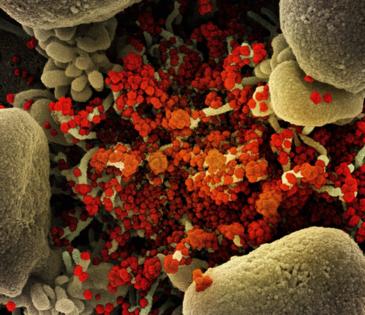It's taken 100 scientists two years to rename airborne viruses after COVID-19 mistakes
Published in News & Features
Airborne viruses will be called “pathogens that transmit through the air” under new terminology the World Health Organization hopes will end a scientific rift that hampered the early response to COVID-19.
After two years of consultations involving over 100 scientists, a WHO-led working group agreed to the term to describe diseases caused by infectious particles that typically multiply in the respiratory tract and spread from the nose and throat of an infected person while they breathe, speak, sing, cough or sneeze.
While the discussion may seem trivial, it carries important economic and public health consequences. How pathogens transmit determines what control measures are most effective at preventing their spread. As COVID erupted in early 2020, the WHO maintained for months that the fast-spreading virus wasn’t airborne — delaying recommendations for mask-wearing and indoor ventilation, and frustrating aerosol scientists who believe the misguided advice cost lives.
“Science changes,” Jeremy Farrar, who took over as chief scientist at the Geneva-based agency about a year ago, said in an interview. “All you can do honorably is to share what you think is the best available evidence at that time.”
Evidence gathered in the ensuing four years has prompted worldwide government action to mitigate airborne diseases. The U.S. Centers for Disease Control and Prevention last month detailed steps that people can take to reduce the number of respiratory particles circulating indoors, a year after the White House set a “clean air in buildings” challenge. The WHO itself released in March an 83-page manual that can be used to assess the risk of airborne COVID spread.
Some researchers have also proposed mandating indoor air quality standards for public buildings. Still, tackling airborne infections remains controversial. The lengthy consultation process around the WHO’s new terminology was “extremely complex and sensitive,” according to the working group’s report, released Thursday.
Global Implications
The report reaches consensus on the term “infectious respiratory particles,” moves away from a strict dichotomy of particle sizes, and accepts that smaller infectious respiratory particles can be transmitted at both short and longer ranges.
Their potential consequences, however, were a sticking point for some of the report’s authors. Infections capable of spreading long distances through the air on tiny respiratory particles may call for rigorous and expensive infection control measures, such as the wearing of particulate-filtering respirator masks and specialized hospital rooms in health-care settings.
“This would have legal, logistic, operational and financial consequences that have global implications with regards to equity and access,” the report added.
...continued
©2024 Bloomberg L.P. Visit bloomberg.com. Distributed by Tribune Content Agency, LLC.







Comments